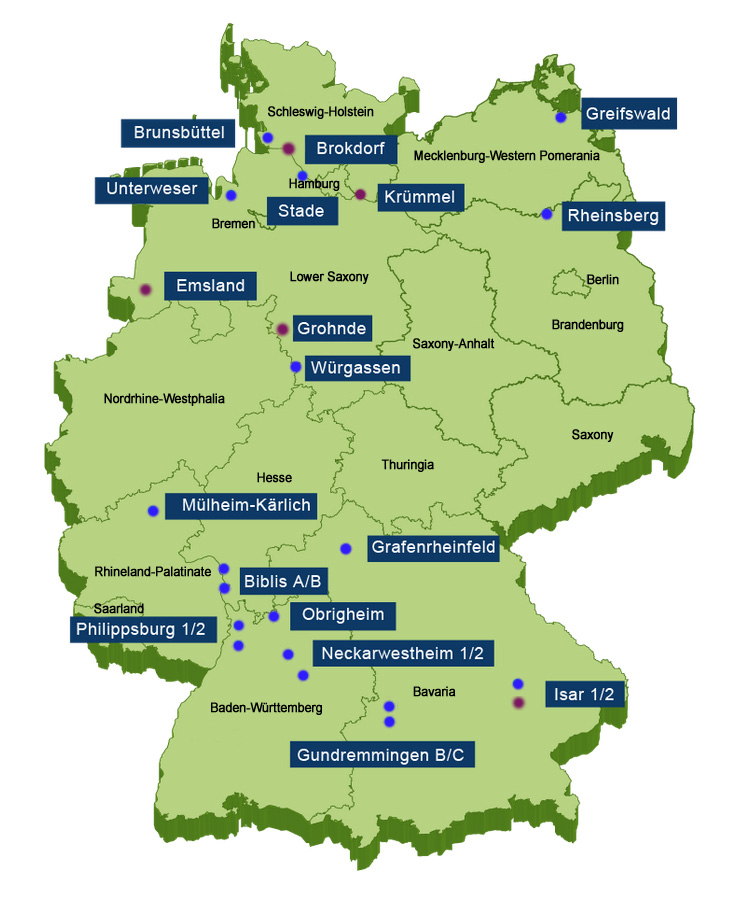Nuclear facilities
In November 1960, the Kahl experimental reactor, located near Aschaffenburg in Lower Franconia, was the first German nuclear power plant to go into operation. In 1989, Neckarwestheim II and Unit 5 of Greifswald nuclear power plant were the last of a total of 36 commercial nuclear reactors to be synchronised with the grid. Between 1957 and 2004, about 110 nuclear installations were put into operation in Germany.
The Act on the structured phase-out of the utilisation of nuclear energy for the commercial generation of electricity of 22 April 2002 created a new framework for nuclear energy use in Germany. The structured phase-out was laid down as one of the purposes of the Atomic Energy Act. An average total operating life of 32 years was seen as a basis for the gradual phase-out of nuclear power plant operations. In 2010, legislators decided to extend the lifetimes of the nuclear power plants still in operation.
Following the Fukushima Daiichi nuclear power plant accident in Japan on 11 March 2011, the German Bundestag passed the 13th Act amending the Atomic Energy Act with a large majority on 30 June 2011. The law entered into force on 6 August 2011. As a result, the operating licences for eight power plants expired and fixed deadlines for the shutdown of Germany’s nuclear power plants were enshrined in law.
The 19th Act amending the Atomic Energy Act provided for the temporary continued operation of the last three nuclear power plants still in operation – Emsland, Isar 2 and Neckarwestheim II – until 15 April 2023, which is beyond the previously established deadline of 31 December 2022. This was done to ensure additional generating capacity in the German electricity grid for the winter of 2022/23 in an effort to secure overall energy supply and maintain grid security.
NPP locations in Germany
